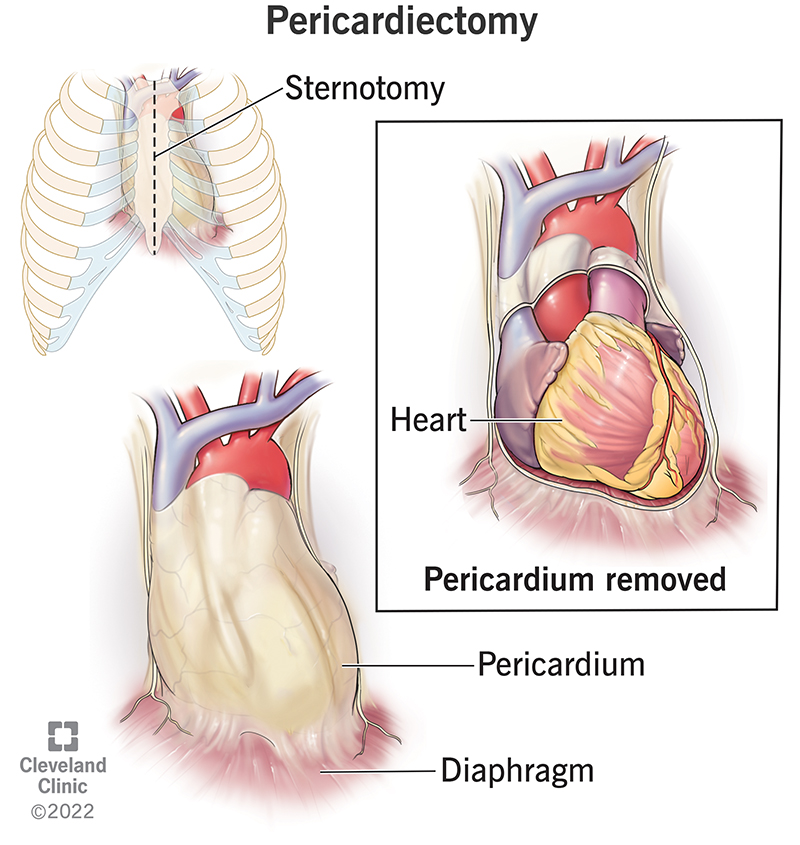
Pericardiectomy Details, Recovery and Outlook
Pericarditis is inflammation of the pericardium. The pericardium is a thin, protective, bag-like membrane surrounding the heart. It has two layers, with a lubricating fluid between the layers. Normally the layers can move against each other without irritation. An inflamed pericardium, however, causes irritation, swelling and pain.
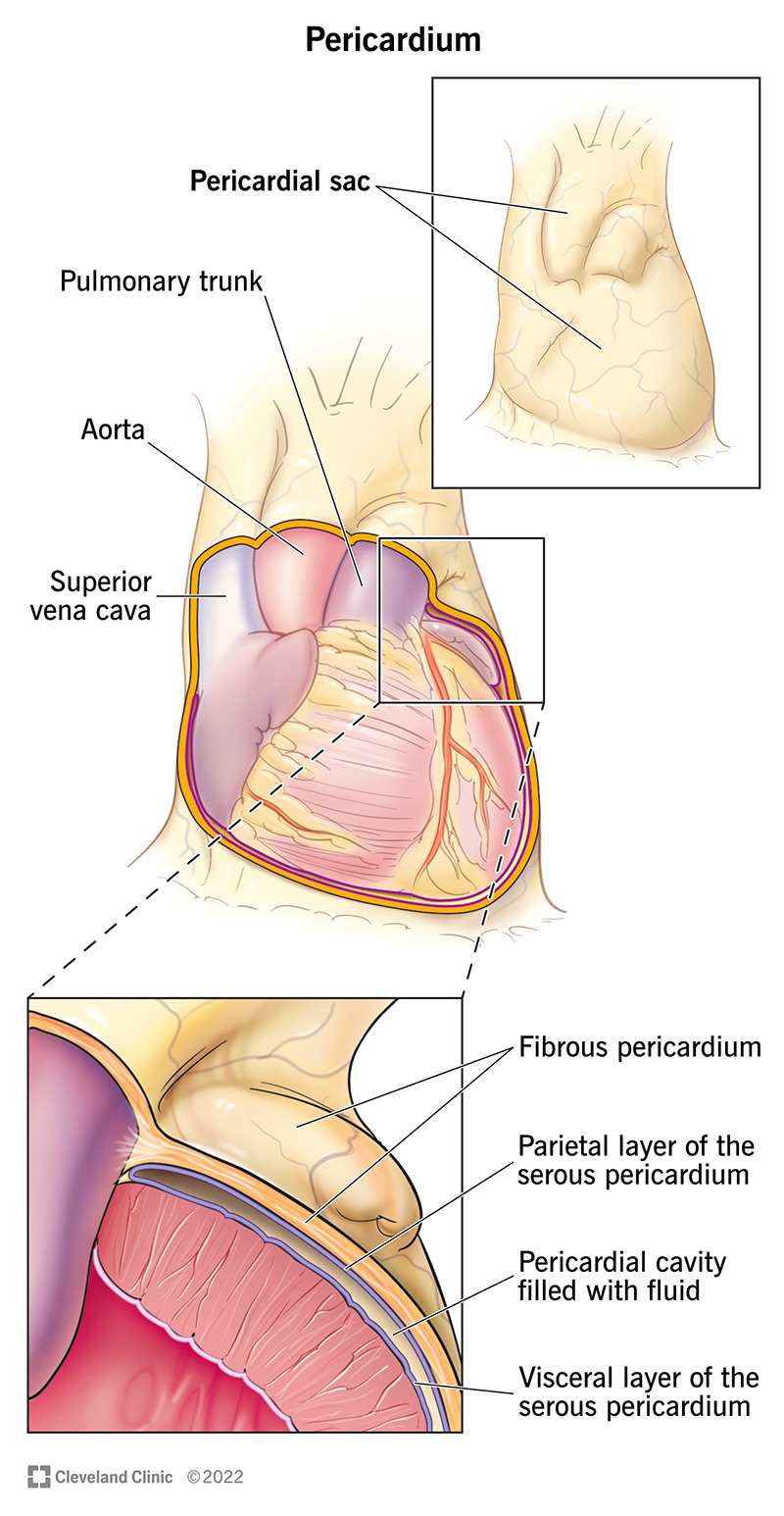
Pericardium Function and Anatomy
Rarely, a pericardial cyst can lead to heart failure.. Constrictive pericarditis is chronic inflammation of the pericardium, which is a sac-like membrane that surrounds the heart. READ MORE.

19.6 Pericardium. The protective layers of the heart include the pericardial sac composed of an
The pericardial membrane and the heart wall share the epicardium. Figure 9.5: Pericardial Membranes and Layers of the Heart Wall. Surface Features of the Heart. Inside the pericardium, the surface features of the heart are visible, including the four chambers. There is a superficial leaf-like extension of the atria near the superior surface of.

Location of the heart Human Cardiovascular System
The pericardial cavity lies between the visceral pericardium and the parietal pericardium. This cavity is filled with pericardial fluid which serves as a shock absorber by reducing friction between the pericardial membranes. There are two pericardial sinuses that pass through the pericardial cavity. A sinus is a passageway or channel.
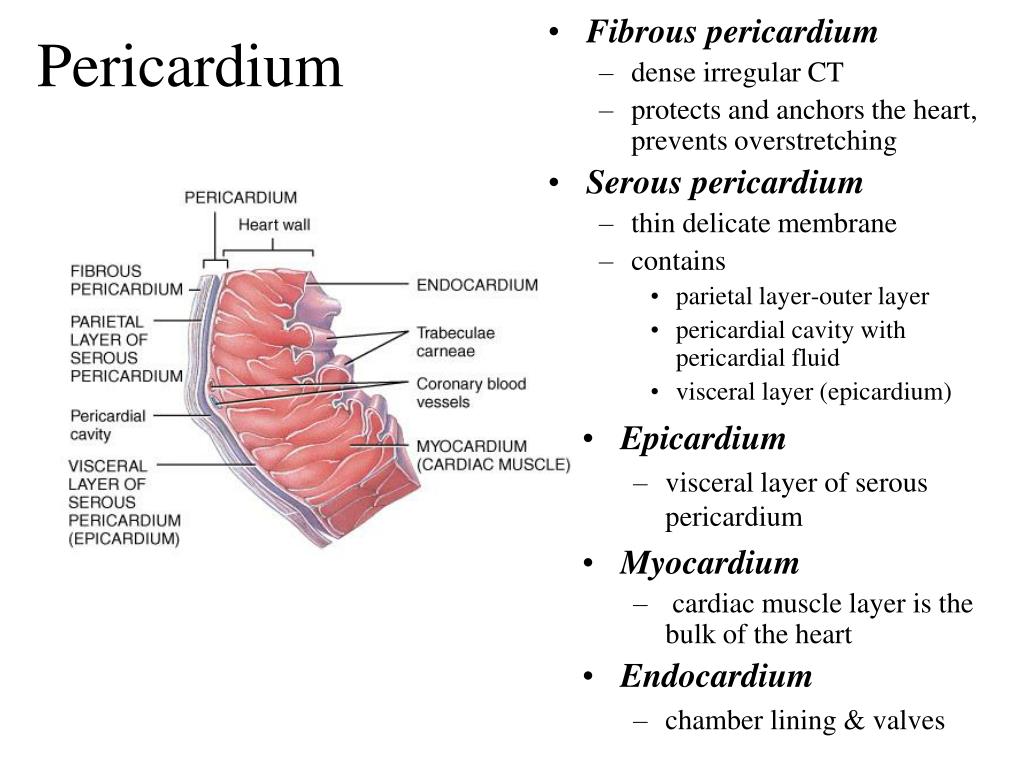
PPT The Cardiovascular System The Heart PowerPoint Presentation, free download ID312194
The pericardium is the thick, membranous, fluid-filled sac that surrounds the heart and the roots of the vessels that enter and leave this vital organ, functioning as a protective membrane. The pericardium is one of the mesothelium tissues of the thoracic cavity, along with the pleura which cover the lungs. The pericardium is composed of two.
Print The Heart flashcards Easy Notecards
Your pericardium is a protective, fluid-filled sac that surrounds your heart and helps it function properly. Your pericardium also covers the roots of your major blood vessels as they extend from your heart. These are known as your "great vessels," and they include your: Aorta. Main pulmonary artery. Pulmonary veins.

Pericardium Definition & Function Video & Lesson Transcript
The heart resides within the pericardial sac and is located in the mediastinal space within the thoracic cavity. The pericardial sac consists of two fused layers: an outer fibrous layer and an inner parietal pericardial serous membrane. Between the pericardial sac and the heart is the pericardial cavity, which is filled with lubricating serous.

PPT Pericardium & Heart PowerPoint Presentation, free download ID4956744
Serous pericardium The thin serous pericardium is a serous membrane, or serosa.Like all serous membranes, it consists of two layers: The outer parietal layer that lays directly on the cavity wall, that is, onto the inner surface of the fibrous pericardium; The inner visceral layer that directly covers the organs in the cavity, that is, the heart.It is also called the epicardium as it is the.
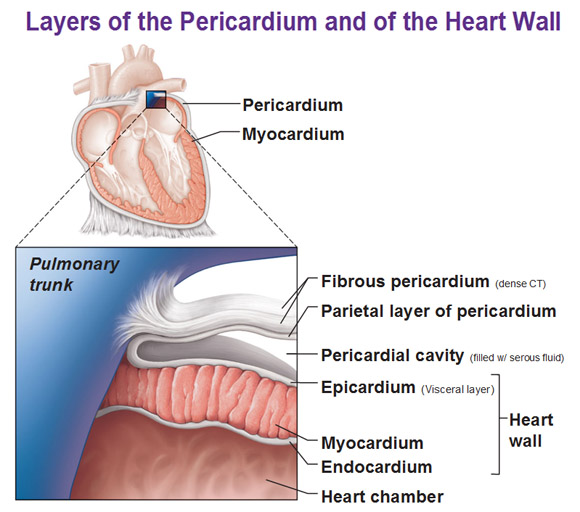
Layers of the Pericardium, Heart Wall and Spiral Arrangement
The pericardial membrane and the heart wall share the epicardium. Disorders of the Heart: Cardiac Tamponade. If excess fluid builds within the pericardial space, it can lead to a condition called cardiac tamponade, or pericardial tamponade. With each contraction of the heart, more fluid—in most instances, blood—accumulates within the.

PPT Anesthesia with Cardiac Tamponade PowerPoint Presentation ID299640
The pericardial membrane and the heart wall share the epicardium. The membrane that directly surrounds the heart and defines the pericardial cavity is called the pericardium or pericardial sac. It also surrounds the "roots" of the major vessels, or the areas of closest proximity to the heart. The pericardium, which literally translates as.
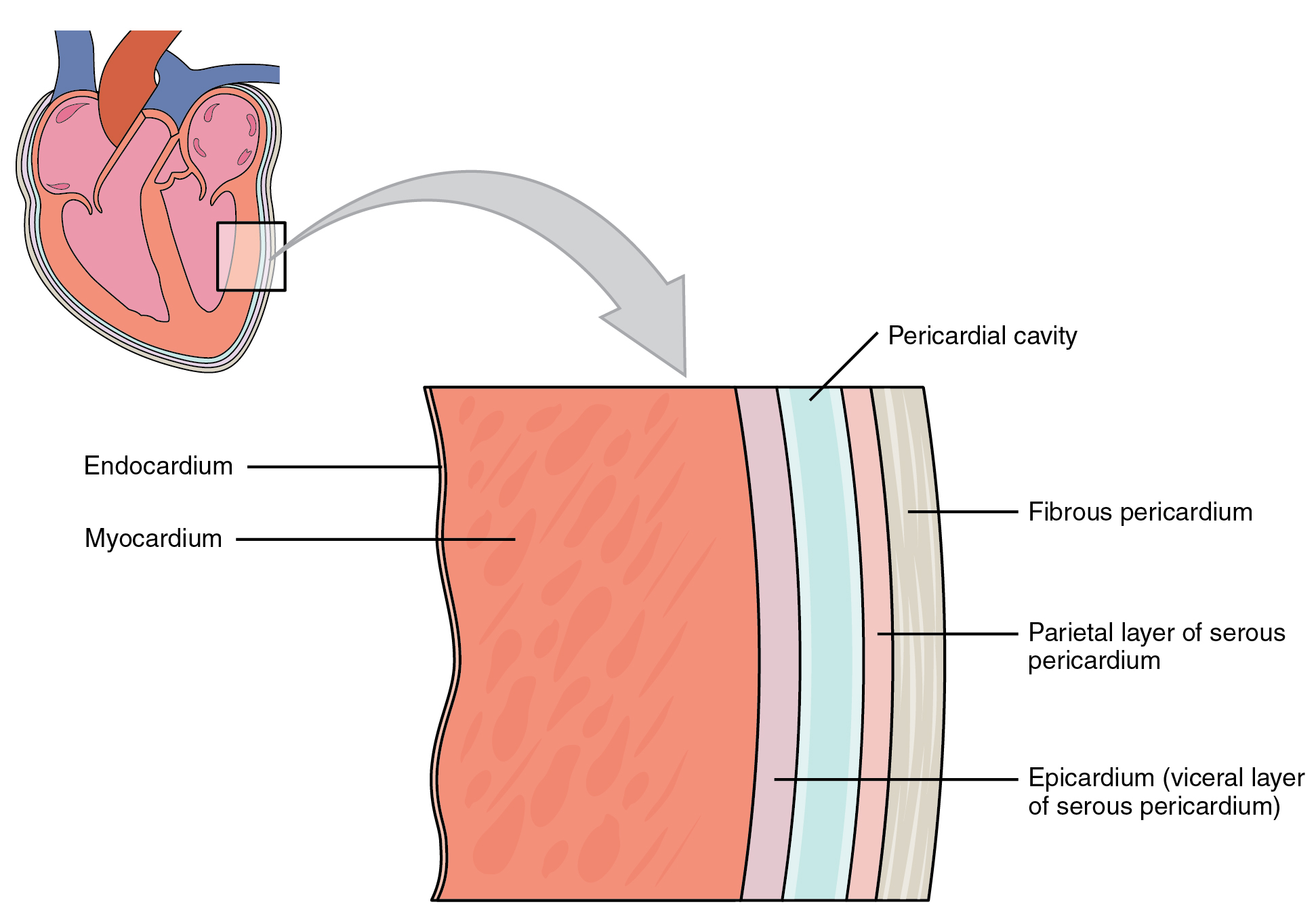
Heart Anatomy · Anatomy and Physiology
Figure 16.3. 1: Pericardial Membranes and Layers of the Heart Wall The pericardial membrane that surrounds the heart consists of three layers and the pericardial cavity. The heart wall also consists of three layers. The pericardial membrane and the heart wall share the epicardium. (CC-BY-4.0, OpenStax, Human Anatomy)
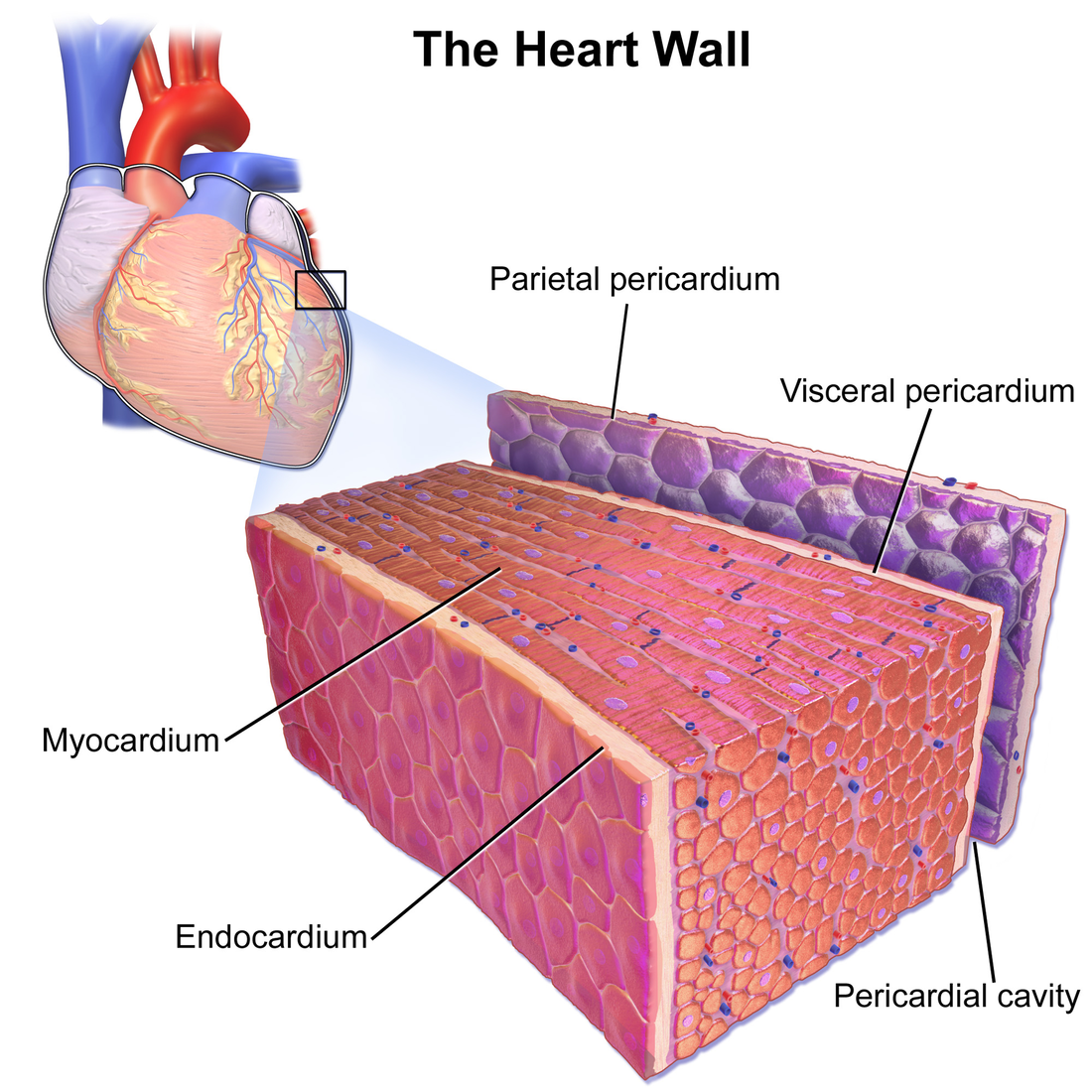
Pericardial Fluid Urinalysis and Body Fluids
When you have pericarditis, the membrane around your heart is red and swollen, like the skin around a cut that becomes inflamed. The pericardium is a thin, two-layered, fluid-filled sac that covers the outer surface of your heart. It provides lubrication for your heart, shields it from infection and malignancy, and contains your heart in your.

Image result for pericardium Circulatory system, Cardiovascular system, Anatomy and physiology
The pericardium is a fluid-filled doubled-walled membrane sac that surrounds the heart. The fluid is separated by two layers, the fibrous and serous pericardium.[1] The fibrous pericardium is the outer layer and holds the heart in place and protect it from surrounding infections.[1] It is composed of thick connective tissue. The serous pericardium has two layers, the visceral and parietal layers.

Medical Facts, Medical Science, Health Science, Respiratory System Anatomy, Biochemistry Notes
If the heart is the fun, interesting inside bit of an orange, the pericardium could be compared to the peel around it.Like peel, it can seem vaguely unexciting - that is until you learn some of its very important (appeeling. ahem.) physiological functions 1. In scientific terms, the pericardium is a fibro-serous, fluid-filled sack that surrounds the muscular body of the heart and the roots.
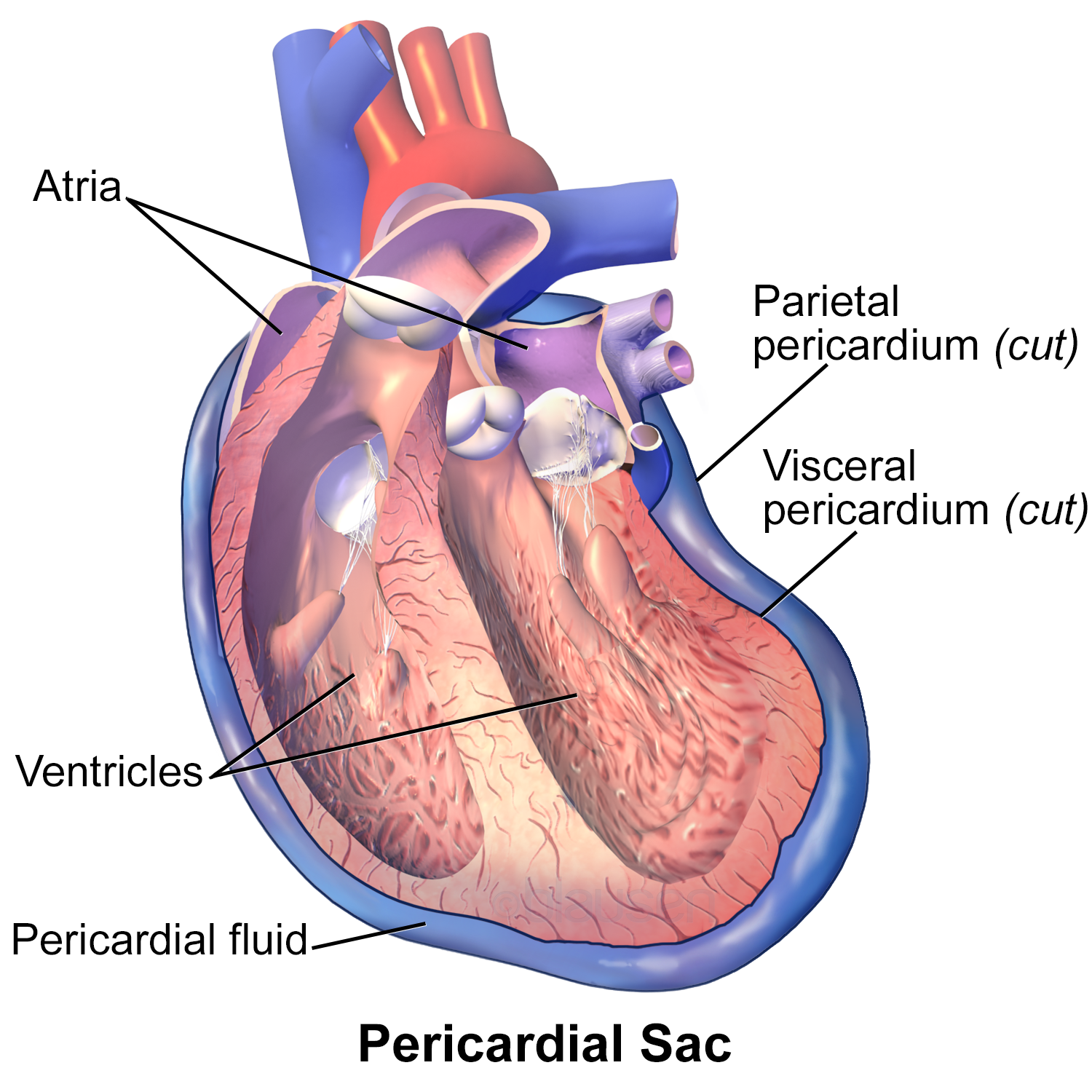
Pericardium The Heart Protector Dr. Elizabeth Cox, ND, LAc
The pericardium ( pl.: pericardia ), also called pericardial sac, is a double-walled sac containing the heart and the roots of the great vessels. [1] It has two layers, an outer layer made of strong inelastic connective tissue ( fibrous pericardium ), and an inner layer made of serous membrane ( serous pericardium ).
/pericardium-57a8a12e5f9b58974a2b4fb7.jpg)
Pericardium—Anatomy and Function
The pericardium is a fluid-filled sac that encases the muscular body of the heart and the roots of the great vessels (including the aorta, pulmonary trunk, pulmonary veins, and the inferior and superior vena cavae ). This fibroserous sac is comprised of a serous membrane supported by a firm layer of fibrous tissue.